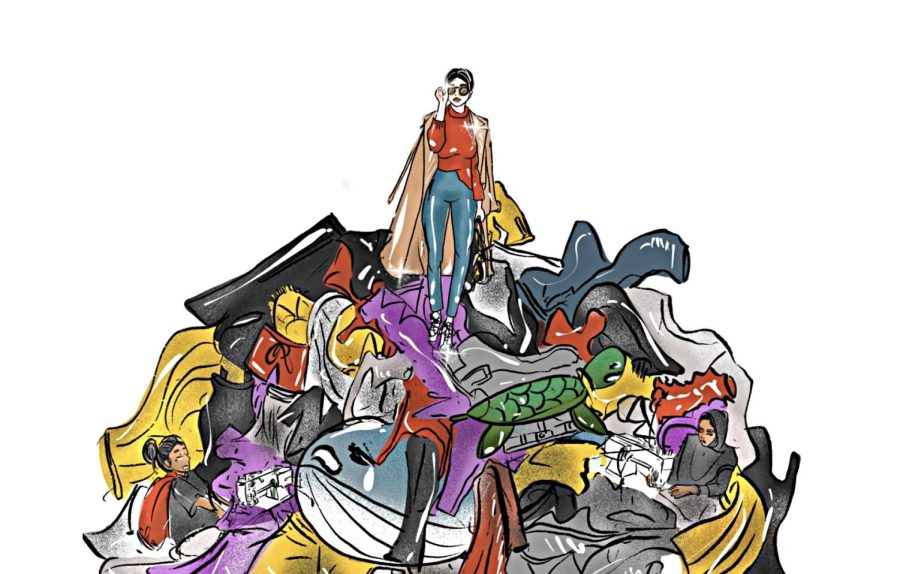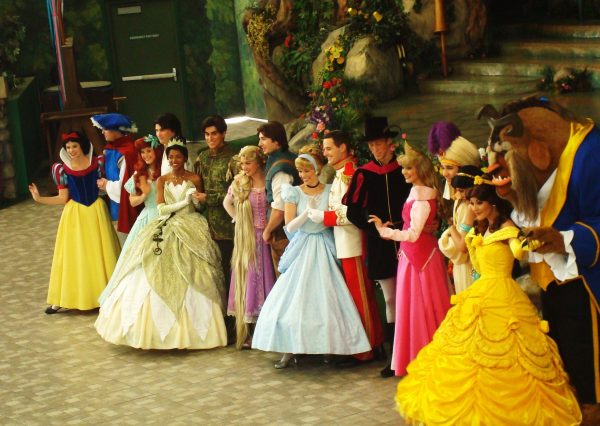Staff Editorial: Dressed to kill
It’s that time of the year again; school has started, and back-to-school hauls are raging in popularity. But the urge to shop doesn’t go away after September. Consumerism once again peaks with the holiday season, causing many of us to go clothes shopping for our friends, family, or even ourselves.
SHEIN, Urban Outfitters, Nike, Adidas — these are some of the brands easily found around the Westlake community and the world in general. They’re trendy, fashionable, and “sustainable” as they call it. We don’t really know what that last word means, but we don’t give it a second thought when we’re excited to buy new items. It doesn’t occur to us that so many of these companies, regardless of their pricing and marketing to look high-quality, are actually forms of fast fashion. And we don’t realize that fast fashion, majorly made from plastics like dyes, antioxidants, and other substances, is destroying the lives of so many on Earth, from organisms in the ocean to those who make the clothes.
According to Ocean Wise, every year the average household in Canada and the U.S. release 3.5 quadrillion microfibers through laundry that pollute the planet’s water. The biggest issue about these particles is that they don’t break down naturally and remaining pieces of plastics float around in the environment, and sometimes even in our own bloodstream. This especially hurts water-based ecosystems that accidentally consume microplastics, causing its inhabitants to either die from poisoning or transfer these substances to their predators. The Earth isn’t the only victim here, though. Giant corporations, in pursuit of large profits at efficient speeds, often exploit developing countries like those in Asia. These nations have manual workers employed at extremely low wages, poor working conditions, and long shift hours. “Sweatshops,” as they’re called, are actually illegal in the U.S. due to the danger they pose to workers, but companies get around these restrictions by outsourcing labor. Factories, in cooperation with larger companies, may subject their laborers to work in environments with sewage on the floor, no toilet breaks, extreme temperatures, inadequate ventilation, fire hazards, unpaid overtime, and hazardous materials.
But if these harsh standards are no secret, why are sweatshops continuing to operate?
The main perpetrator? The companies that sell fast fashion, especially under the guise that their clothing is “sustainable.” Corporate claims of being eco-friendly and ethical give consumers the illusion of choice. Ultimately, we are misled into believing we’re choosing the more renewable option from a company that doesn’t pollute the planet or use sweatshops.
For Westlake, it can be especially easy to look the other way on these issues. The majority of our community is not experiencing the most dramatic consequences of fast fashion. We’ve probably never witnessed piles of trash in the ocean build up or experienced the horrors mistreated workers sewing together our clothes face daily. We might not even know people from developing countries. Even if we did, we’re constantly surrounded by a million different news stories, each talking about some new disaster that’s happening in the world. Who can blame teenagers for becoming desensitized? Not to mention truly sustainable clothing, from small or ethical businesses, can be far more expensive than fast fashion.
However, this is one barrier we as a generation must overcome – our empathy has to extend beyond just our line of sight with the people we know. If we are able to collectively demand transparency from companies through government incentive/action and greater press coverage, corporations will be forced to confront their immoral exploitation and pollution.
But there is another tactic that frequently comes to mind when trying to combat a company – boycotting. Though it seems simple and obvious, it is actually incredibly harmful towards impoverished workers making fast fashion. Many workers in developing countries have no ethical options of work, and forcing them out of factories would push them to mining, prostitution, and a number of other unsustainable jobs. This seems to be a fact not many in the Western world understand, as it has been decades since working conditions such as these have been so widespread in a country. Therefore, boycotting cannot be the first tactic we resort to, and instead we must focus on other solutions like the ones presented above.
In the meantime, feeling like we have to keep up with the hottest trends in fashion due to the influence of others is another tactic we have to fight against. Instead of having celebrities, influencers, or other people tell us how we should dress, reclaiming our own style is vital in reducing consumerism.
This is a hard issue to fix, there is no doubt about it. It could easily take decades to see any noticeable changes, and starting a movement can be the hardest part. Many of us feel so small compared to the grand scale of corporate monopolies and their control over the fast fashion industry. However, acknowledging the issue in the first place is one step towards a resolution. Dressing not to kill begins with us.











